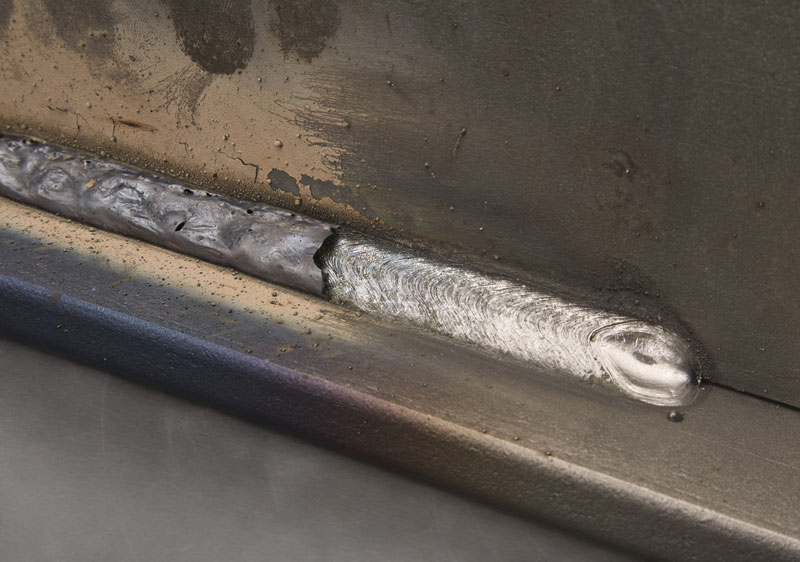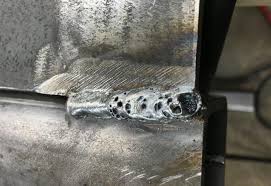What is Porosity in Welding: Key Variables and Their Effect On Weld Quality
What is Porosity in Welding: Key Variables and Their Effect On Weld Quality
Blog Article
Comprehending Porosity in Welding: Checking Out Reasons, Impacts, and Prevention Techniques
As professionals in the welding industry are well mindful, recognizing the causes, results, and prevention methods connected to porosity is essential for attaining durable and trustworthy welds. By delving into the origin triggers of porosity, examining its detrimental results on weld high quality, and discovering reliable avoidance approaches, welders can boost their expertise and abilities to generate premium welds continually.
Usual Root Causes Of Porosity
Porosity in welding is mainly created by a combination of variables such as contamination, incorrect shielding, and inadequate gas coverage throughout the welding procedure. Contamination, in the type of dirt, oil, or corrosion on the welding surface area, produces gas pockets when heated up, resulting in porosity in the weld. Improper shielding happens when the protecting gas, commonly utilized in procedures like MIG and TIG welding, is not able to completely protect the molten weld pool from responding with the surrounding air, resulting in gas entrapment and succeeding porosity. In addition, poor gas insurance coverage, usually as a result of inaccurate flow rates or nozzle positioning, can leave components of the weld unguarded, enabling porosity to form. These aspects collectively add to the development of voids within the weld, deteriorating its honesty and possibly triggering architectural concerns. Understanding and addressing these common causes are important action in avoiding porosity and ensuring the top quality and toughness of bonded joints.
Effects on Weld High Quality
The existence of porosity in a weld can substantially endanger the overall high quality and honesty of the bonded joint. Porosity within a weld develops spaces or tooth cavities that compromise the structure, making it much more vulnerable to cracking, deterioration, and mechanical failure. These spaces serve as stress concentrators, lowering the load-bearing capacity of the weld and increasing the chance of premature failure under applied stress. Additionally, porosity can additionally act as possible sites for hydrogen entrapment, further intensifying the deterioration of the weld's mechanical residential properties.
Additionally, porosity can prevent the performance of non-destructive screening (NDT) methods, making it challenging to discover various other issues or discontinuities within the weld. This can lead to considerable safety issues, particularly in critical applications where the architectural stability of the bonded elements is critical.

Prevention Techniques Summary
Given the damaging effect of porosity on weld quality, reliable avoidance techniques are critical to maintaining the structural stability of bonded joints. One of the main prevention methods is comprehensive cleansing of the base materials prior to welding. Contaminants such as oil, oil, rust, and moisture can add to porosity, so making certain a tidy work surface area is crucial. Correct storage space of welding consumables in dry problems is additionally important to avoid dampness absorption, which can result in gas entrapment during welding. Additionally, selecting the suitable welding parameters, such as voltage, existing, and take a trip speed, can help reduce the danger of porosity development. Guaranteeing sufficient protecting gas flow and insurance coverage is another critical prevention technique, as not enough gas insurance coverage can cause atmospheric contamination and porosity. Finally, proper welder training and certification are explanation vital for carrying out precautionary measures properly and constantly. By integrating these prevention strategies right into welding techniques, the occurrence of porosity can be substantially minimized, causing stronger and a lot more reputable welded joints.
Significance of Proper Protecting
Proper securing in welding plays a critical role in avoiding climatic contamination and ensuring the integrity of bonded joints. Shielding gases, such as argon, helium, or a combination of both, are frequently used to imp source secure the weld swimming pool from reacting with elements airborne like oxygen and nitrogen. When these responsive elements come right into call with the warm weld swimming pool, they can create porosity, bring about weak welds with lowered mechanical residential or commercial properties.

Inadequate shielding can result in numerous problems like porosity, spatter, and oxidation, endangering the architectural stability of the welded joint. Sticking to correct protecting practices is crucial to create top quality welds with minimal defects and ensure the longevity and dependability of the welded parts.
Surveillance and Control Techniques
Just how can welders properly monitor and regulate the welding process to guarantee optimal results and protect against problems like porosity? By continuously keeping an eye on these variables, welders can determine variances from the perfect conditions and make immediate changes to prevent porosity development.

Additionally, carrying out correct training programs for welders is necessary for monitoring and regulating the welding procedure successfully. What is Porosity. Enlightening welders on the significance of keeping constant parameters, such as proper gas securing and travel speed, can help protect against porosity problems. Routine assessments and accreditations can also make sure that welders excel in monitoring and managing welding procedures
Additionally, making use of automated welding systems can boost monitoring and control capacities. These systems can specifically control welding criteria, reducing the chance of human mistake and guaranteeing constant weld quality. By integrating sophisticated monitoring modern technologies, training programs, and automated systems, welders can successfully keep an eye on and manage the welding procedure to reduce porosity defects and accomplish top quality welds.
Conclusion

Report this page